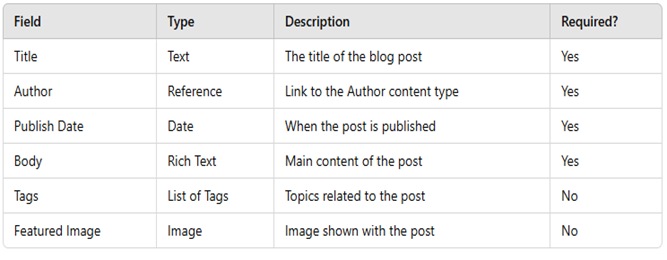DEREK BARKA
MEET DEREK
PARTNER, CHIEF TECHNOLOGY OFFICER
As Chief Technology Officer at SilverTech, Derek defines and drives the agency’s technology vision—helping clients harness data, digital platforms, and emerging technologies to solve complex business challenges and build meaningful, lasting customer relationships.
Known for finding solutions to the toughest and most complicated technology challenges, Derek combines innovation with deep expertise across enterprise architecture, cloud infrastructure, custom development, and big data. He brings a security-first mindset and a sharp focus on privacy and compliance, enabling organizations to build secure, scalable, and future-ready digital ecosystems.
Derek serves as a strategic adviser to both SilverTech’s technology partners and clients. He works closely with platform providers—often consulting on product roadmaps—to ensure solutions align with real-world business needs and deliver maximum value. He also helps client organizations develop and execute digital roadmaps that make the most of their existing systems and data, integrating legacy technologies with modern platforms where and when it makes sense to drive growth, stay competitive, and support long-term success.
Throughout his career, Derek has played a key role in shaping the tools and platforms that power modern digital marketing. He is a recognized authority and thought leader in the martech space—recently named a Kentico MVP and Progress Sitefinity Champion. Derek holds numerous certifications, including Kentico Developer, Kentico Marketer, Sitefinity Developer, and Sitecore Developer.


What is Content Modeling? A Guide to Structuring Content for Success
5/23/25
Content is everywhere — websites, apps, marketing campaigns, chatbots, and more. Behind every piece of content that looks clean and well-organized is an intentional content model guiding how that content is created, stored, and displayed. Whether you are a developer, designer, marketer, or content strategist, understanding content modeling is essential to building scalable and effective digital experiences.
What is Content Modeling?
Content modeling is the process of identifying, organizing, and structuring all the distinct types of content an organization needs — and defining how these pieces relate to one another. Think of it as creating a blueprint for your content, much like an architect creates a blueprint for a building. A content model breaks content down into content types, fields, relationships, and ensures that content is reusable, adaptable, and easy to manage across multiple platforms and channels. Why is Content Modeling Important? Without a clear content model, content can become fragmented, inconsistent, and difficult to manage. Here’s why content modeling should be a cornerstone of your content strategy:
• Consistency: Ensures that content is structured uniformly across all platforms.
• Scalability: Makes it easier to add new content types or adapt to new channels without starting from scratch.
• Reusability: Allows content to be repurposed for different contexts (e.g., websites, apps, voice assistants)
• Collaboration: Helps designers, developers, and writers work from the same content blueprint, reducing confusion and errors.
• Future-proof: Prepares your content to be flexible and ready for future technologies and platforms.
Key Elements of a Content Model
1. Content Types
These are the different kinds of content you need, such as "Blog Post," "Product," "Testimonial," "Event," or "Author."
2. Fields/Attributes
Each content type has specific pieces of information (fields) associated with it.
• For a Blog Post, fields might include Title, Author, Publish Date, Body, Tags, and Featured Image.
• For a Product, fields might include Name, Description, Price, SKU, and Image.
3. Relationships
Content types often relate to each other.
• A Blog Post might have a relationship with an Author.
• A Product might be linked to multiple Categories.
4. Content Rules
These are constraints and guidelines that ensure content is created correctly.
• Example: "The Title field is required and has a 60-character limit."
• Example: "An Event must have a Date and Location."
5. Taxonomies and Tags
To classify and group content logically, you may define categories, tags, or custom taxonomies (e.g., genres for books).
A Simple Example: Modeling a Blog Post

How content Modeling Helps Teams
• Content Strategists: Plan and organize content in ways that align with business goals.
• Designers: Know exactly what content elements are available to design for.
• Developers: Can build flexible and efficient content structures in CMS or headless CMS systems.
• Marketing Teams: Ensure consistent messaging and design across campaigns.
Content Modeling in a Headless CMS World
What is Content Modeling? <p><b>Content modeling</b> is the process of identifying, organizing, and structuring all the distinct types of content an organization needs — and defining how these pieces relate to one another. Think of it as creating a blueprint for your content, much like an architect creates a blueprint for a building.</p> <p>A content model breaks content down into <b>content types, fields, relationships</b>, and <b>rules</b>, ensuring that content is reusable, adaptable, and easy to manage across multiple platforms and channels.</p> <h2>Why is Content Modeling Important?</h2> <p>Without a clear content model, content can become fragmented, inconsistent, and difficult to manage. Here’s why content modeling should be a cornerstone of your content strategy:</p> <p style=">With the rise of headless CMS platforms like Sanity and Contentful and hybrid headless CMS platforms like Kentico and Progress Sitefinity, content modeling has become even more critical. Since content is decoupled from presentation, having a solid model allows you to reuse the same content across websites, mobile apps, and even IoT devices without reauthoring content.
Tips for Effective Content Modeling
• Start with a Content Inventory: Identify all content types and their variations.
• Think About Relationships: Map out how content pieces connect.
• Consider Reusability: Design models that allow content to be reused in multiple contexts.
• Involve Stakeholders Early: Collaborate with developers, designers, and marketers to ensure the model works for everyone.
• Document Everything: Create clear documentation so everyone understands the content structure.
A Complex Example: Website Content Model
A complex content model for a website ensures structured content management, facilitating scalability, personalization, and multi-channel publishing.
[Home Page] ---> [Services] ---> [Case Studies]
| | |
V V V
[About Page] <--> [Team] [Testimonials]
|
V
[Contact Page]
Services Example
• GET /services – Get all services
• GET /services/{id} – Get a specific service
• POST /services – Create a new service
• PUT /services/{id} – Update a service
• DELETE /services/{id} – Delete a service
"id": 1,
"name": "Web Development",
"description": "Custom website development services.",
"category": "Development",
"icon": "https://cdn.yourbusiness.com/icons/web-dev.png",
"pricing": "Contact for Pricing",
"related_services": [2, 3]
Final Thoughts
Unlock the full potential of your digital ecosystem with SilverTech’s Content Modeling Solutions. Content modeling is more than just a technical task — it is a collaborative effort that ensures your content is consistent, flexible, and ready to meet user needs. Whether you’re managing a dynamic website, powering omnichannel marketing, or streamlining content governance, our expertly crafted models bring order to complexity.
A strong content model will set you up for success. We design flexible, future-proof structures that empower teams to create, manage, and distribute content seamlessly—reducing redundancies, improving searchability, and accelerating time-to-market. With SilverTech, your content isn’t just organized, it’s optimized for engagement, innovation, and business growth.
Ready to create a content model? Don’t delay! Get in touch to discover how SilverTech’s content modeling solution can make it happen.
